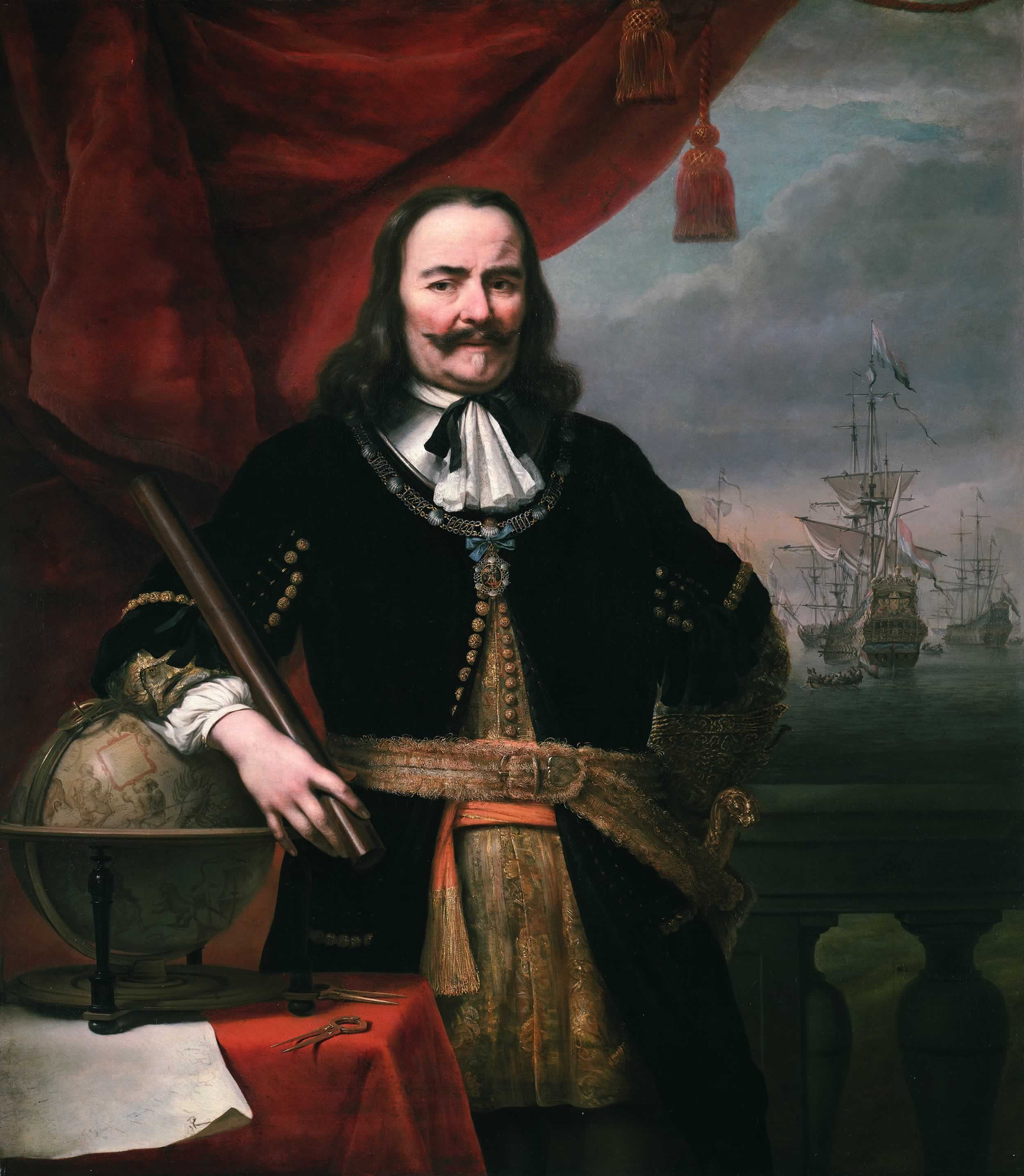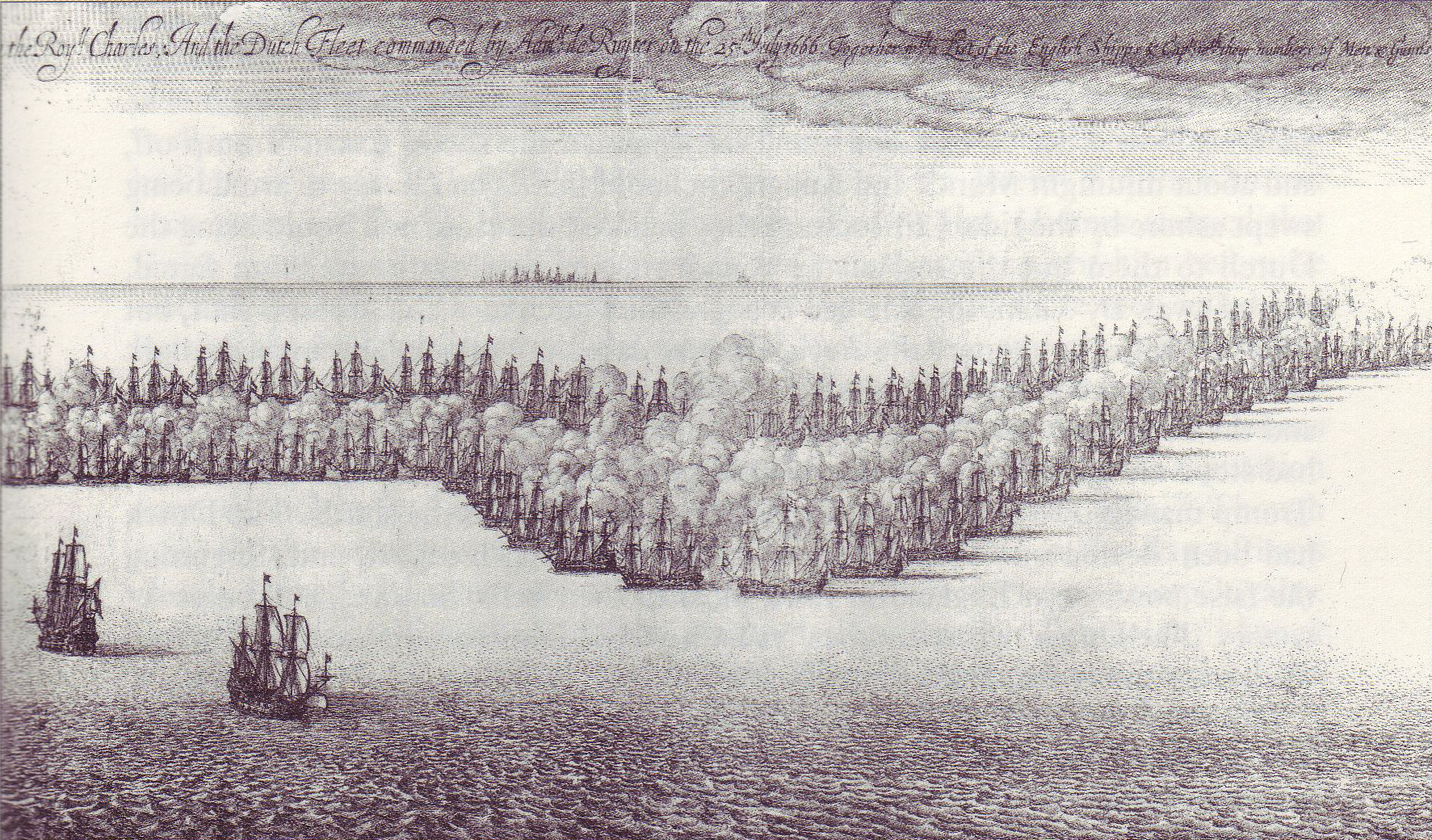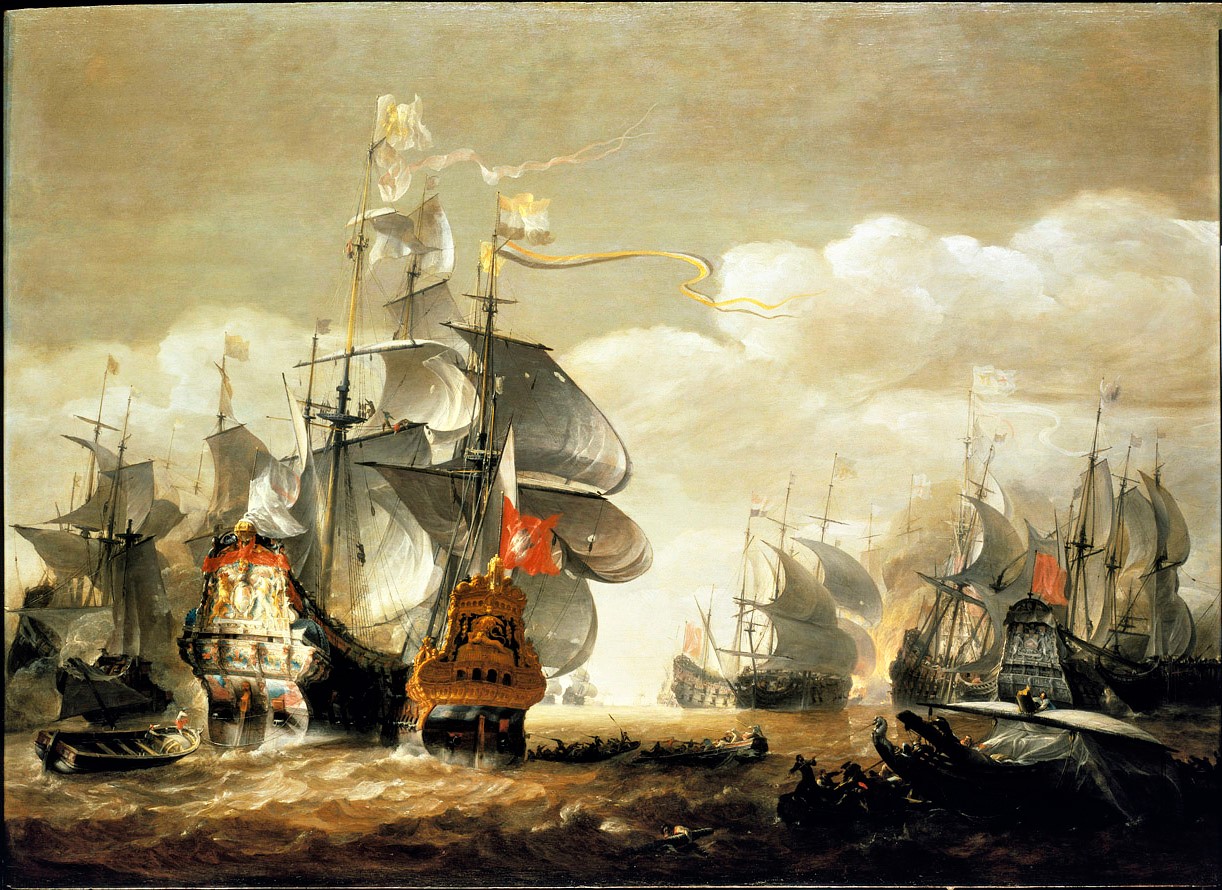|
Adriaen Banckert
Adriaen van Trappen Banckert (c.1615 – 22 April 1684) was a Dutch admiral. In English literature he is sometimes known as ''Banckers''. His first name is often rendered in the modern spelling ''Adriaan''. ''Van Trappen'' was the original family name, but the family was also and better known under the name of ''Banckert''. In the 17th century Netherlands such a situation was solved by combining the two names. He was born, probably in Vlissingen or Flushing, somewhere between 1615 and 1620 as the second and middle son of Rear-Admiral Joost van Trappen Banckert and Adriana Jansen. Both his brothers were navy captains, serving the Admiralty of Zealand also. Adriaen started his career on the ship of his father, fighting the Dunkirkers. In 1639, at the Battle of the Downs, Adriaen was master on that ship. In 1642 he became a captain himself. During the First Anglo-Dutch War Adriaen was flagcaptain of the Zealandic Vice-Admiral Johan Evertsen on the ''Hollandia''. In the Battle of ... [...More Info...] [...Related Items...] OR: [Wikipedia] [Google] [Baidu] |
Adriaen Banckert, By Hendrick Berckman
Adriaen is a Dutch form of Adrian. Notable people with the name include: *Adriaen Banckert (1615–1684), Dutch admiral * Adriaen Block (1567–1627), Dutch private trader and navigator * Adriaen Brouwer (1605–1638), Flemish genre painter * Adriaen de Vries (1556–1626), Northern Mannerist sculptor born in the Netherlands * Adriaen Hanneman (1603–1671), seventeenth-century Dutch painter *Adriaen Isenbrandt (1480–1551), Flemish Northern Renaissance painter *Adriaen Maertensz Block (1582–1661), successively captain, commander, and governor of the Ambon Island *Adriaen van Bergen devised the plot to recapture the city of Breda from the Spanish during the Eighty Years' War *Adriaen van de Velde (1636–1672), Dutch animal and landscape painter *Adriaen van de Venne (1589–1662), versatile Dutch Baroque painter * Adriaen van der Cabel (1631–1705), Dutch painter of the Dutch school * Adriaen van der Donck (1618–1655), lawyer and landowner in New Netherland *Adriaen van der We ... [...More Info...] [...Related Items...] OR: [Wikipedia] [Google] [Baidu] |
Frederick III Of Denmark
Frederick III ( da, Frederik; 18 March 1609 – 9 February 1670) was King of Denmark and Norway from 1648 until his death in 1670. He also governed under the name Frederick II as diocesan administrator (colloquially referred to as prince-bishop) of the Prince-Bishopric of Verden (1623–29 and again 1634–44), and the Prince-Archbishopric of Bremen (1635–45). The second-eldest son of Christian IV and Anne Catherine of Brandenburg, Frederick was only considered an heir to the throne after the death of his older brother Prince Christian in 1647. He instituted absolute monarchy in Denmark-Norway in 1660, confirmed by law in 1665 as the first in Western historiography. He also ordered the creation of the Throne Chair of Denmark. In order to be elected king after the death of his father, Frederick conceded significant influence to the nobility. As king, he fought two wars against Sweden. He was defeated in the Dano-Swedish War of 1657–1658, but attained great popularit ... [...More Info...] [...Related Items...] OR: [Wikipedia] [Google] [Baidu] |
Battle Of Texel
The naval Battle of Texel or Battle of Kijkduin took place off the southern coast of island of Texel on 21 August 1673 (11 August Old Style, O.S.) between the Dutch Republic, Dutch and the combined Kingdom of England, English and Kingdom of France, French fleets. It was the last major battle of the Third Anglo-Dutch War, which was itself part of the Franco-Dutch War (1672–1678), during which Louis XIV of France invaded the Republic and sought to establish control over the Spanish Netherlands. English involvement came about because of the Treaty of Dover, secretly concluded by Charles II of England, and which was highly unpopular with the English Parliament. The overall commanders of the English and Dutch military forces were Lord High Admiral James, James II of England, Duke of York, later James II, and Admiral-General William III of England, William III of Orange, his son-in-law and another future King of England. Neither of them took part in the fight. Prince Rupert of the ... [...More Info...] [...Related Items...] OR: [Wikipedia] [Google] [Baidu] |
Battle Of Schooneveld
The Battles of Schooneveld were two naval battles of the Franco-Dutch War, fought off the coast of the Netherlands on 7 June and 14 June 1673 (New Style; 28 May and 4 June in the Julian calendar then in use in England) between an allied Anglo-French fleet commanded by Prince Rupert of the Rhine on his flagship the Royal Charles, and the fleet of the United Provinces, commanded by Michiel de Ruyter. The Dutch victories in the two battles, and at the Battle of the Texel that followed in August, saved their country from an Anglo-French invasion. Background The Franco-Dutch War of 1672–1678 resulted from the attempts of Louis XIV of France to annex the Spanish Netherlands. In 1672, troops from France, Münster and Cologne invaded the Netherlands by land, while England's navy attacked Dutch shipping and threatened a seaborne invasion. The conflict between England and the Republic is commonly called the Third Anglo-Dutch War. The years 1672-1673 were particularly despera ... [...More Info...] [...Related Items...] OR: [Wikipedia] [Google] [Baidu] |
Michiel De Ruyter
Michiel Adriaenszoon de Ruyter (; 24 March 1607 – 29 April 1676) was a Dutch admiral. Widely celebrated and regarded as one of the most skilled admirals in history, De Ruyter is arguably most famous for his achievements with the Dutch Navy during the Anglo-Dutch Wars. He fought the English and French forces and scored several critical victories, with the Raid on the Medway being the most famous among them. Often dubbed a Dutch folk hero, De Ruyter is one of a few select officers in the history of the Dutch navy to hold the title of the lieutenant admiral ( nl, luitenant-admiraal). Reportedly beloved by his subordinates and seamen, De Ruyter was commonly nicknamed ''Bestevaêr'' (Middle Dutch for "grandfather") during his service, a nickname that is sometimes still used to refer to him in Dutch media. Early life De Ruyter was born on 24 March 1607 in Vlissingen, in the Spanish Netherlands, the son of a seaman who eventually became a brewery drayman, Adriaen Michielszoo ... [...More Info...] [...Related Items...] OR: [Wikipedia] [Google] [Baidu] |
Battle Of Solebay
The naval Battle of Solebay took place on 28 May Old Style, 7 June New Style 1672 and was the first naval battle of the Third Anglo-Dutch War. The battle began as an attempted raid on Solebay port where an English fleet was anchored and largely unprepared for battle, and ended at a hard-fought draw. The battle however prevented a planned allied naval invasion of the Dutch Republic and boosted the morale of the Dutch population. Both sides claimed victory. The battle A fleet of 75 wars ships, 20,738 men and 4,484 cannon of the United Provinces, commanded by Lieutenant-Admirals Michiel de Ruyter, Adriaen Banckert and Willem Joseph van Ghent, surprised a joint Anglo-French fleet of 85-95 war ships (depending on source), 34,496 men and 6,018 cannon at anchor in Solebay (nowadays just Southwold bay), at Southwold in Suffolk, on the east coast of England. The Dutch had the weather gauge until their withdrawal. The Duke of York and Vice-Admiral Comte Jean II d'Estrées planned ... [...More Info...] [...Related Items...] OR: [Wikipedia] [Google] [Baidu] |
Third Anglo-Dutch War
The Third Anglo-Dutch War ( nl, Derde Engels-Nederlandse Oorlog), 27 March 1672 to 19 February 1674, was a naval conflict between the Dutch Republic and England, in alliance with France. It is considered a subsidiary of the wider 1672 to 1678 Franco-Dutch War. In the 1670 Secret Treaty of Dover, Charles II of England agreed to support an attack by Louis XIV of France on the Dutch Republic. By doing so, Louis hoped to gain control of the Spanish Netherlands, while Charles sought to restore the damage to his prestige caused by the 1667 Raid on the Medway. Under the treaty, Charles also received secret payments which he hoped would make him financially independent of the English Parliament. The French offensive in May and June 1672 quickly over-ran most of the Republic, with the exception of the core province of Holland, where they were halted by water defences. In early June, the Anglo-French fleet was badly damaged by the Dutch under Michiel de Ruyter at the Battle of Solebay, ... [...More Info...] [...Related Items...] OR: [Wikipedia] [Google] [Baidu] |
Raid On The Medway
The Raid on the Medway, during the Second Anglo-Dutch War in June 1667, was a successful attack conducted by the Dutch navy on English warships laid up in the fleet anchorages off Chatham Dockyard and Gillingham in the county of Kent. At the time, the fortress of Upnor Castle and a barrier chain called the "Gillingham Line" were supposed to protect the English ships. The Dutch, under nominal command of Willem Joseph van Ghent and Lieutenant-Admiral Michiel de Ruyter, over several days bombarded and captured the town of Sheerness, sailed up the Thames estuary to Gravesend, then sailed into the River Medway to Chatham and Gillingham, where they engaged fortifications with cannon fire, burned or captured three capital ships and ten more ships of the line, and captured and towed away the flagship of the English fleet, . Politically, the raid was disastrous for King Charles' war plans and led to a quick end to the war and a favourable peace for the Dutch. It was one of the worst ... [...More Info...] [...Related Items...] OR: [Wikipedia] [Google] [Baidu] |
Zeeland
, nl, Ik worstel en kom boven("I struggle and emerge") , anthem = "Zeeuws volkslied"("Zeelandic Anthem") , image_map = Zeeland in the Netherlands.svg , map_alt = , map_caption = Location of Zeeland in the Netherlands , pushpin_map = , pushpin_label_position = , pushpin_map_alt = , pushpin_map_caption = , coordinates = , coor_pinpoint = , coordinates_footnotes = , subdivision_type = Country , subdivision_name = Netherlands , established_title = , established_date = , founder = , seat_type = Capital , seat = Middelburg, Zeeland, Middelburg , seat1_type = Largest city , seat1 = Ter ... [...More Info...] [...Related Items...] OR: [Wikipedia] [Google] [Baidu] |
St James' Day Battle
St James' Day Battle (also known as St James' Day Fight, the Battle of the North Foreland and the Battle of Orfordness) took place on 25 July 1666 — St James' day in the Julian calendar then in use in England (4 August 1666 in the Gregorian calendar), during the Second Anglo-Dutch War. It was fought between fleets of England, commanded jointly by Prince Rupert of the Rhine and George Monck, 1st Duke of Albemarle, and the United Provinces commanded by Lieutenant-Admiral Michiel de Ruyter. In the Netherlands, the battle is known as the Two Days' Battle. Background This attack followed on the heels of the Four Days' Battle of 1–4 June 1666 which is normally considered a Dutch victory. Battle First day In the early morning of 25 July, the Dutch fleet of 88 ships discovered the English fleet of 89 ships near North Foreland, sailing to the north. De Ruyter gave orders for a chase and the Dutch fleet pursued the English from the southeast in a leeward position, as the wind ... [...More Info...] [...Related Items...] OR: [Wikipedia] [Google] [Baidu] |
Four Days Battle
The Four Days' Battle, also known as the Four Days' Fight in some English sources and as Vierdaagse Zeeslag in Dutch, was a naval battle of the Second Anglo-Dutch War. Fought from 1 June to 4 June 1666 in the Julian or Old Style calendar that was then used in England, in the southern North Sea, it began off the Flemish coast and ended near the English coast. It remains one of the longest naval engagements in history. Dutch accounts referred to its dates as 11 June to 14 June 1666 by using the New Style calendar. The Dutch inflicted significant damage on the English fleet, which lost ten ships in total, with over 1,000 men killed, including two vice-admirals, Sir Christopher Myngs and Sir William Berkeley, and almost 2,000 English were taken prisoner including a third vice-admiral, George Ayscue. Dutch losses were four ships destroyed by fire and over 1,550 men killed, including Lieutenant Admiral Cornelis Evertsen, Vice Admiral Abraham van der Hulst and Rear Admiral Frederik ... [...More Info...] [...Related Items...] OR: [Wikipedia] [Google] [Baidu] |
Battle Of Lowestoft
The Battle of Lowestoft took place on during the Second Anglo-Dutch War. A fleet of more than a hundred ships of the United Provinces commanded by Lieutenant-Admiral Jacob van Wassenaer, Lord Obdam attacked an English fleet of equal size commanded by James, Duke of York forty miles east of the port of Lowestoft in Suffolk. Although it was a substantial English victory, the escape of the bulk of the Dutch fleet deprived England of the chance of ending the war quickly with a single decisive victory. As a result, the Dutch were able to make good their losses by building new and better-armed ships and improving their organisation and discipline. Their Dutch fleets would not be so badly organised or ill-disciplined in the remaining battles of this war and, in Obdam's replacement, Michiel de Ruyter, the Dutch had gained a superb tactician and leader for the remainder of the war. Background The Second Anglo-Dutch War resulted from long-standing commercial tensions between England ... [...More Info...] [...Related Items...] OR: [Wikipedia] [Google] [Baidu] |



_-_The_Second_Battle_of_Schooneveld%2C_4_June_1673_-_BHC0306_-_Royal_Museums_Greenwich.jpg)

.jpg)




